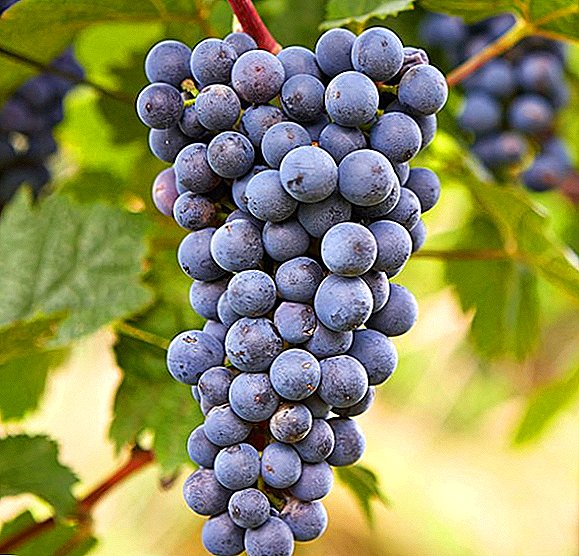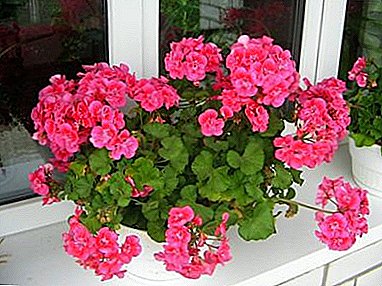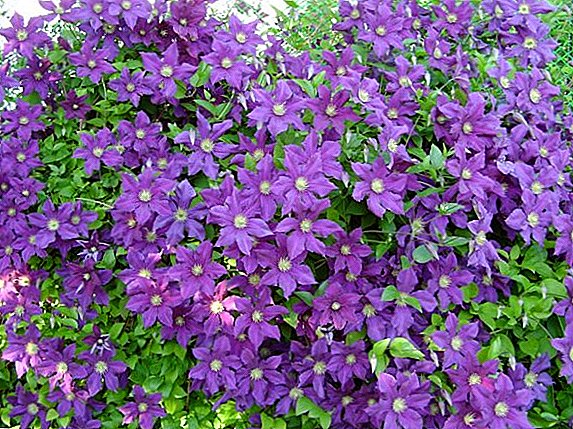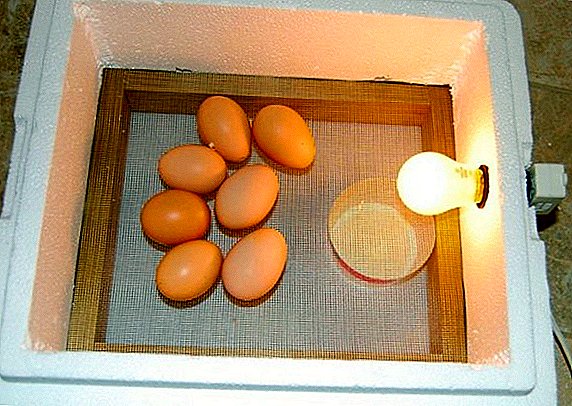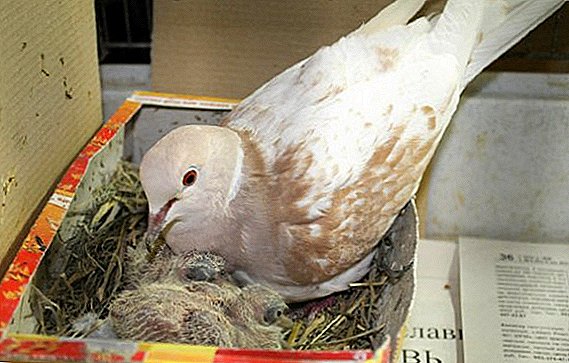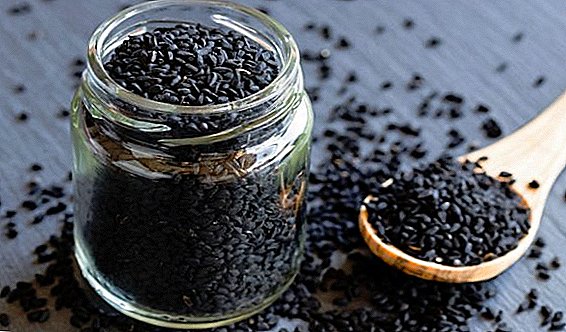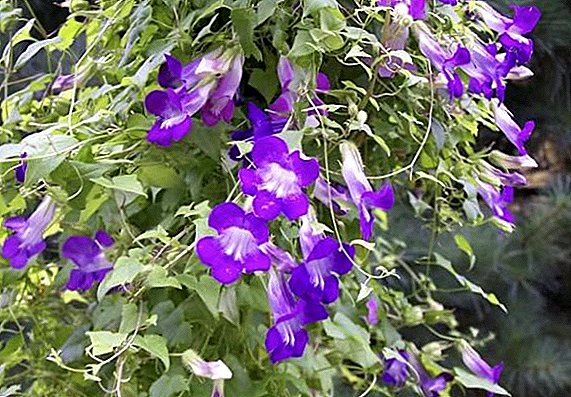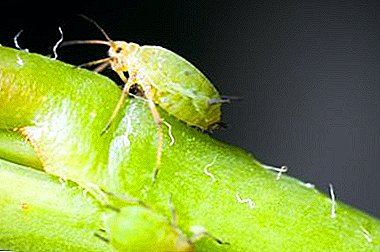
In early summer, a pest - aphid settles on the leaves of many garden crops. Despite its small size, these insects are very dangerous, as they suck juices from tender young shoots, slowing the growth of plants (what does aphids feed on in nature?). Aphids multiply very quickly, and it is important to notice and destroy these garden pests on time. Together with the aphids, it is also necessary to neutralize their "shepherds" - the ants - ants (about the symbiosis of ants and aphids, read here).
Advantages and disadvantages in the fight against insects
The advantages of folk remedies for aphids:
- many of them not only destroy insects, but also are fertilizer, saturate the soil with useful substances, stimulate plant growth and increase yield;
- mostly safe when used correctly;
- do not have an unpleasant smell than most insecticides sin;
- available and cheap;
- they can be used to prevent the appearance of aphids in the garden and in the garden;
- quickly destroy pests.
 Among all the methods of dealing with aphids is not ideal, and folk remedies, despite the apparent safety and high efficiency, have their drawbacks.
Among all the methods of dealing with aphids is not ideal, and folk remedies, despite the apparent safety and high efficiency, have their drawbacks.
Disadvantages of folk methods:
- they are not absorbed into the fabric of leaf plates, they remain on their surface, therefore they are easily washed off during watering or after rain;
- in most cases, do not act immediately, repeated processing is necessary;
- some folk remedies are unsafe for humans (ammonia), it is necessary to use protective clothing during processing;
- Failure to follow the rules can cause burns on the leaves.
No means can be sprayed on a bright sunny day.. Drops of the solution can play the role of a lens and burn the leaves.
Description, cooking instructions, processing methods
There are several general principles for the treatment of plants from aphids by non-chemical means:
- almost every liquid agent is added with soap for better adhesion of the solution to the leaves;
- the solution is applied to the stems and leaves, it should not be allowed to fall on the soil (does not apply to all folk remedies);
- necessarily treat the underside of the leaves - there are most aphids;
- the procedure is carried out in cloudy, but dry weather;
- Do not water the plants for 2-3 days after treatment.
Ammonia (10% ammonia solution)
Ammonia affects the respiratory and digestive system of aphids, there are convulsions and death of the insect.
Recipes with ammonia:
 2 tablespoons (50 ml) diluted in 10 liters of water, add grated soap (50 g), the solution is thoroughly mixed.
2 tablespoons (50 ml) diluted in 10 liters of water, add grated soap (50 g), the solution is thoroughly mixed.- A tablespoon of washing powder and 50 g of ammonia per 8 liters of water.
Using protective gloves and a respirator, the plants are watered with a prepared solution from a watering can with a nozzle-strainer (the spray gun will not work, as it sprays the solution too much and that may simply not reach the leaves). The procedure is repeated every 2 weeks. Use only freshly prepared solution, since ammonia is a volatile substance..
We offer to watch a video on how to deal with aphids with ammonia:
Mustard
The sharp smell of mustard and its bitter taste do not tolerate both ants and aphids.
Mustard Recipes:
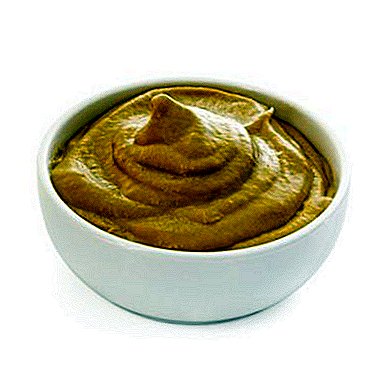 100 g of mustard powder dissolved in 10 liters of water; if there are a lot of insects, the solution is made more concentrated - 200 g per 10 liters.
100 g of mustard powder dissolved in 10 liters of water; if there are a lot of insects, the solution is made more concentrated - 200 g per 10 liters.- Pour 10 g of mustard powder with a liter of water, insist 2 days in a warm place, dissolve the infusion in 5 liters of water.
Using:
- Spray the plants affected by aphids from a spray bottle. The procedure is repeated in a week.
- Sprinkle the ant walkways and the anthill itself with mustard powder.
Laundry soap
To prepare the solution, you can use the usual soap without flavors or tar soap (it added birch tar, which is an effective tool in the fight against this pest).
Recipes with soap:
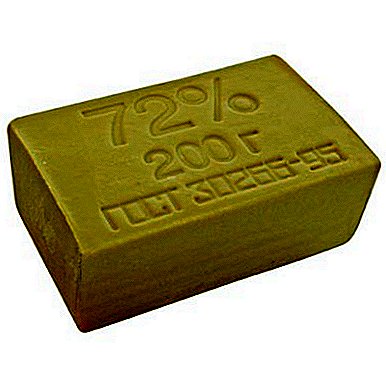 Dissolve 250 g of grated soap in 10 liters of water, mix well and beat before foaming.
Dissolve 250 g of grated soap in 10 liters of water, mix well and beat before foaming.- A glass of soap shavings and a glass of vegetable oil mixed with 10 liters of water (by adding oil, the composition does not evaporate from the leaves any longer).
Pour the prepared solution into the basin and dip the top branches and leaves of the plants into it. If aphids settled on a tree, branches are sprayed with a solution of soap.. Do not use a spray gun - it will become clogged with soapy water. It is better to take a regular plastic bottle with holes in the cap.
2-3 days after treatment, it is imperative to wash the soap film from the plants in order to clean their breathing pores. To do this, plant a hose with a strong pressure of water.
Green soap
This is a more environmentally friendly means of dealing with aphids than ordinary soap, as it contains only vegetable oils and natural fats, completely destroyed in the soil after washing. Acts just like ordinary soap.
Recipes with green soap:
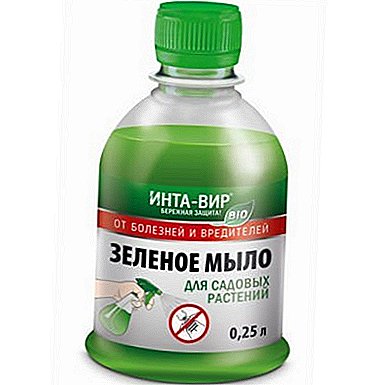 Dissolve 200 ml of green soap in 10 liters of warm water. Shake the bottle thoroughly before stirring.
Dissolve 200 ml of green soap in 10 liters of warm water. Shake the bottle thoroughly before stirring.- 2 parts of water, 4 parts of green soap (shake the bottle) and 2 parts of kerosene to mix thoroughly, beating up to the formation of foam.
Rinse a small number of plants with a solution or dip upper leaves into it. Spray trees or bushes with flowers in the same way as when using soap.
The procedure is carried out three times a year.:
- in the spring before leafing;
- in the summer during flowering;
- before picking the fruit.
Ash
Ash irritates the skin of aphids, causing an unpleasant burning sensation for them. In addition, it penetrates the leafy plates, making the sap of the plant bitter.
 Ash Recipes:
Ash Recipes:
- Dissolve 300 g of powder in hot water, boil for half an hour, dissolve in 10 liters of water.
- Mix the same solution with 50 g of soap for better adhesion.
Using:
- In the spring - shed the ground around trees or bushes before leafing.
- Summer - spray pre-watered plants (for better adhesion) with the resulting solution in dry weather. Repeat 2 times in 2 weeks.
Ash can also be used in dry form, for example, to dust the radish and cabbage.
Ash-soap solution
The soap in the solution envelops the insects, depriving them of the ability to breathe, and the ash acts as a poison.
 Recipes with soap-and-soap solution:
Recipes with soap-and-soap solution:
- 250-350 g of wood ash is dissolved in 10 liters of water, then 60 g of rubbed soap are added and mixed thoroughly so that all components are completely dissolved.
- 2 cups of sifted ash is poured with 10 liters of water and insisted for 1 day, a quarter of the bar of laundry soap is dissolved in the same way for a day, then mixed and filter the solution.
The resulting solution is sprayed plants affected by aphids.
Vinegar
It acts due to a sharp odor for several days, scaring away aphids, while not causing harm to other cultures.
 Recipes with vinegar:
Recipes with vinegar:
- 10 teaspoons of apple cider vinegar per 10 liters of liquid, mix well.
- 4 teaspoons of concentrated vinegar essence dissolved in 10 liters of water.
For better adhesion, you can add to the solution chips from laundry soap. Using:
- spray leaves from the bottom of the top of the spray;
- with a large number of insects use a watering can with a nozzle-strainer.
Tobacco
 It acts due to a sharp smell that averts deterring.
It acts due to a sharp smell that averts deterring.
Tobacco Recipes:
- Half a cup of dry tobacco, half a cup of grated household soap, 3 liters of water are mixed and infused for 1-2 days.
- 200 g of dried, shredded tobacco leaves are diluted in 5 liters of water, infused for 24 hours, then the solution is brought to 10 liters and simmer for an hour and a half.
Dried tobacco can be obtained by purchasing the cheapest cigarettes without a filter or fine tobacco dust in specialized garden stores.
Using:
- with the prepared solution, water the plants under the root and spray the leaves from the sprayer from the bottom upwards;
- powder the leaves with tobacco dust through gauze (50 g per 10 sq. m), it is better to carry out after watering;
- fumigate with dry grass mixed with 500 g of tobacco dust or dry tobacco leaves.
The treatment is repeated 3 times after 3 days.
Vodka
 Vodka does not kill aphids, but scares it away from the plant with its specific strong odor, acting on the insect's sensitive receptors. This method can be applied on a limited area due to the high cost of vodka.
Vodka does not kill aphids, but scares it away from the plant with its specific strong odor, acting on the insect's sensitive receptors. This method can be applied on a limited area due to the high cost of vodka.
Vodka is sprayed from a spray bottle, directing it from bottom to top on the opposite side of the leaves and sprinkling the rosettes of leaves. The result is provided after a single use.
Garlic
It also repels pests with a pungent odor, so it is best to use infusions of it as a preventive measure. You can simply plant garlic all over the garden.
 Garlic recipe:
Garlic recipe:
- Crush and chop 3-5 cloves of garlic, 2 teaspoons of vegetable oil, 1 teaspoon of soap chips, dissolve all the components in half a liter of water.
- Insist 1-2 days in a tightly closed container.
Dissolve two tablespoons of the infusion in a 1.5 liter bottle with a spray nozzle and process the plants that the aphid has occupied.
Houseplants can also be affected by aphids. With all the nuances of dealing with this pest at home can be found in this article, and here we talked about how to get rid of aphids on orchids.
Conclusion
There are many folk remedies to combat aphids, most of them are cheap, easy to prepare and use. However, it is necessary to strictly observe the dosage of the substances used in order not to damage the plants. Aphid treatment is carried out more than once..


 2 tablespoons (50 ml) diluted in 10 liters of water, add grated soap (50 g), the solution is thoroughly mixed.
2 tablespoons (50 ml) diluted in 10 liters of water, add grated soap (50 g), the solution is thoroughly mixed. 100 g of mustard powder dissolved in 10 liters of water; if there are a lot of insects, the solution is made more concentrated - 200 g per 10 liters.
100 g of mustard powder dissolved in 10 liters of water; if there are a lot of insects, the solution is made more concentrated - 200 g per 10 liters. Dissolve 250 g of grated soap in 10 liters of water, mix well and beat before foaming.
Dissolve 250 g of grated soap in 10 liters of water, mix well and beat before foaming. Dissolve 200 ml of green soap in 10 liters of warm water. Shake the bottle thoroughly before stirring.
Dissolve 200 ml of green soap in 10 liters of warm water. Shake the bottle thoroughly before stirring.